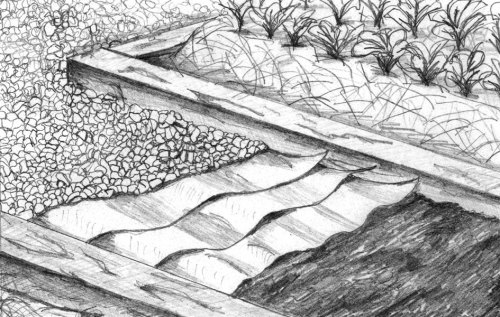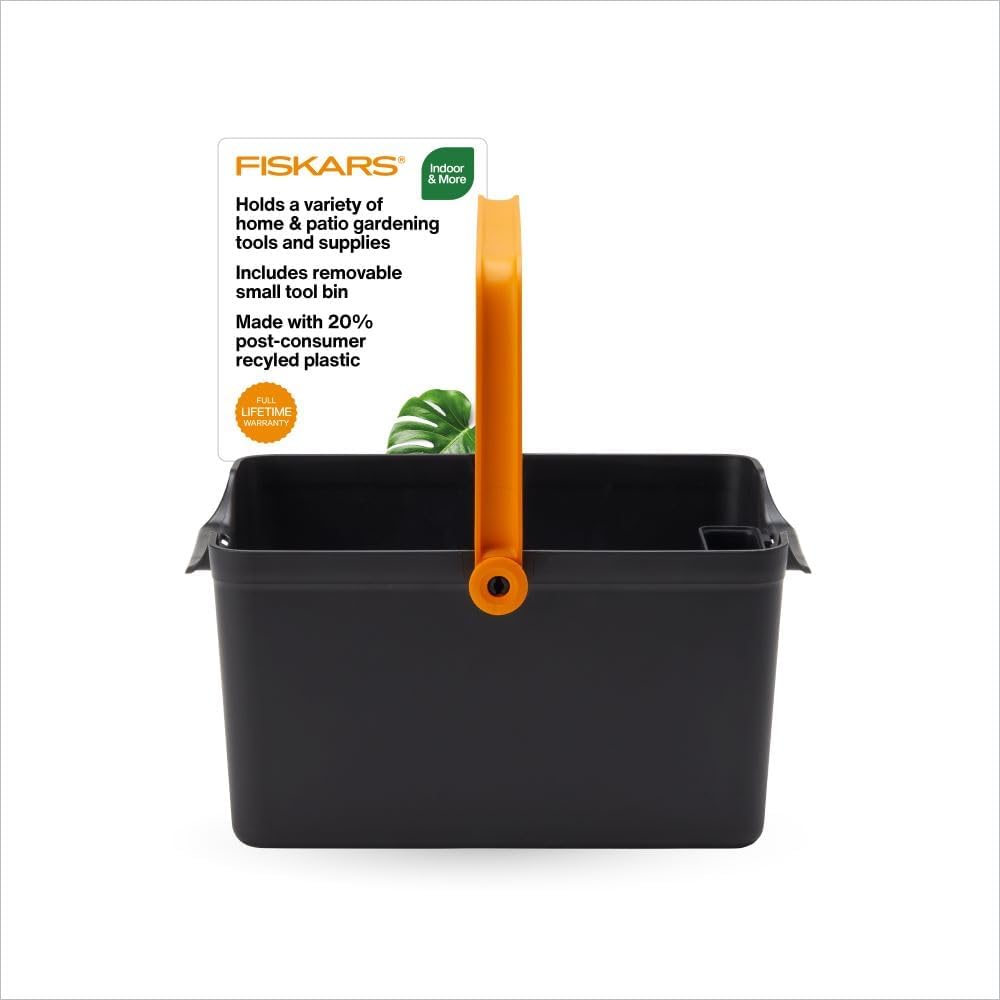Managing Weeds With a Light Touch (Part 2 of 2)
If you establish realistic weed-tolerance levels and implement a few strategies, you can have a reasonably weed-free patch

Once you have acquired some biological background on the weeds that grow in your garden and have established realistic weed tolerance levels, as I discussed in part 1 of this article, you are ready to implement strategies that will rid your garden of excessive weeds and prevent new ones from taking their place.
This approach to weed management is often referred to as integrated weed management, or IWM. IWM focuses on understanding the conditions that allow weeds to grow and on reducing those conditions. By addressing the basic causes of weed growth, not just treating the individual weeds themselves, you can help your garden develop weed resistance, keeping weed numbers low enough to prevent excessive competition with food crops, yet retaining the benefits of low numbers of certain beneficial weed species. An important feature of the IWM approach is that herbicides are rarely, if ever, necessary.
Weeds need life-support systems in order to grow. These include adequate soil type and condition, water, nutrients, sunlight for photosynthesis, and space for growth. When designing (or redesigning) your garden, you can build in weed-prevention components that deny weeds one or more of these essential life-support systems and thereby prevent unacceptable levels of weed growth.
Tip the balance in favor of food crops
As I explained in part 1, disturbed soil is a highly favored habitat for many weeds, whose rapid germination and rate of growth enable them to get a head start on slower-germinating food crops.
Since soil cultivation is a regular activity when preparing beds for planting, disturbed soil is a common feature of most kitchen gardens. The trick to overcoming this seeming dilemma is to combine a number of horticultural strategies to tip the ecological advantage to the food crops instead of to the weeds.
Limit light
When weed seeds germinate, they have a finite amount of energy available to them to push up through the soil and reach sunlight. Weed seedlings denied access to light will die without ever making an appearance above the soil. The most effective way to do this is to cover the soil with a mulch of organic plant residues, such as compost or weed-free straw or hay, or with a synthetic weed barrier fabric.
To be effective in preventing or limiting weed growth, mulches must be applied immediately after soil cultivation or other soil disturbance; for example, after pulling weeds or readying the soil for planting. This timing is critical to prevent sunlight from reaching weed seeds brought to the surface when the soil was disturbed; it also prevents migrating seeds from settling in. It is best to have mulch on hand before you begin digging or weeding so you can cover cleared sections before moving on.
Organic mulches must be applied deep enough to overcome the attempts of germinating seeds to get to sunlight. But too much organic mulch can smother the roots of desirable vegetation and impede water penetration and gaseous exchanges in the soil. On vegetable beds, apply at least 3 inches but not more than 6 inches of organic mulch. In perennial beds containing such plants as artichokes, berries, grapevines, or fruit trees, be careful to keep the mulch several inches away from the stems of the plants; mulch mounded against plant stems retains moisture and promotes disease.
Weed access to light and growing space can also be limited by a technique called close planting. If your garden soil is loose, well drained, and full of rich organic compost, you can plant vegetable seeds or transplants very close together without sacrificing yields. The close spacing will enable the transplants to occupy most of the soil habitat, inhibiting weed germination and shading out those weeds that do manage to lift their leaves above the soil line.
Another technique, called interseeding, involves sowing seeds of low, fast-growing annual or short-term perennial flowers, such as sweet alyssum (Lobularia maritima) or scarlet flax (Linum grandiflorum var. rubrum), in the bare soil around vigorous crops such as potatoes or berry vines that eventually produce a significant amount of top growth. The flowers serve as colorful temporary fillers that germinate quickly and occupy the soil spaces in and around these slower-growing crops, protecting the soil from weeds until the flowers themselves give way to the more aggressive food crop.
Limit water
Where feasible, use drip, ooze, or furrow irrigation to water your garden. Drip and ooze irrigation systems place water directly in the root zone of plants and apply it slowly enough for plants to absorb most of it soon after it reaches the roots, so little moisture is left over to support weeds. By contrast, overhead irrigation systems apply water indiscriminately over the soil surface, providing water to both garden plants and weeds.
The amount of water available to weeds can also be limited by planting vegetables on raised soil mounds and irrigating them via furrows dug beside the mounds. The furrows and the edges of the mounds where weeds get enough water to grow can be cultivated. Meanwhile, the tops of the mounds remain relatively dry, so few weeds germinate there.
This technique may not be effective if the mounds are shallow (less than 4 inches high) or in clay soils where water may move upward by capillary action. When this happens, the tops of the mounds become wet after a furrow irrigation, a phenomenon known as subbing.
Manipulate soil fertility
To prevent weed seedlings from getting a jump start on slower-germinating vegetables, try holding back on nitrogen fertilization at planting time. Nitrogen encourages fast growth of leaves and stems, and weeds will make use of it ahead of most vegetables. Instead, make sure there is adequate available phosphorous in the soil. This nutrient is key to root growth, which temporarily slows above-ground growth of foliage while a healthy root system is being developed. The vegetable plants will welcome ready access to phosphorus during the initial growth stages (as will the weeds), but the temporary absence of excessive nitrogen might help level the playing field for vegetables and weeds at the soil surface.
The integrated weed management strategies I have just described will help you to prevent or significantly reduce the presence of weeds in your garden for long periods of time. To the degree that these strategies become permanent components of your garden planning and operation, your battle with weeds will require less and less effort and expense. With these methods in place, the occasional weeds that crop up can be tolerated or easily pulled, hoed, mowed, or cultivated out. In addition, you will enjoy the fruits of increased biodiversity in your kitchen garden. In most cases, herbicides will not be needed in order to keep weeds at bay. And if they are, they can be applied in very limited amounts in specific locations as a one-time transition tool until these long-term weed prevention methods are implemented and fine-tuned.
—This article originally appeared in Kitchen Gardener #25 (February 2000).
Fine Gardening Recommended Products

Fiskars Garden Tool Caddy with Removable Small Tool Storage for Indoor and Outdoor Gardening Use, Made with Recycled Plastic
Fine Gardening receives a commission for items purchased through links on this site, including Amazon Associates and other affiliate advertising programs.

Corona® Multi-Purpose Metal Mini Garden Shovel
Fine Gardening receives a commission for items purchased through links on this site, including Amazon Associates and other affiliate advertising programs.

A.M. Leonard Deluxe Soil Knife & Leather Sheath Combo
Fine Gardening receives a commission for items purchased through links on this site, including Amazon Associates and other affiliate advertising programs.






Comments
Log in or create an account to post a comment.
Sign up Log in